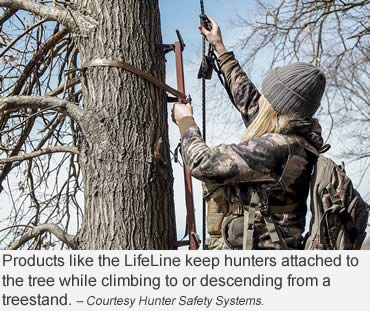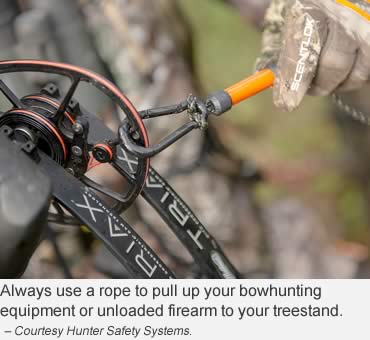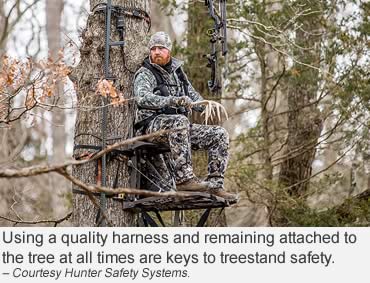More than 200,000 hunters will pursue the abundant game in Alabama this season, which means hunter safety should be at the forefront of any outdoors adventure. Captain Marisa Futral, Hunter Education Coordinator, Wildlife and Freshwater Fisheries (WFF) Division, would love to see a repeat of the 2021-2022 season, when zero fatalities were reported for hunting accidents.
“Last year was a good year,” Futral said. “Everybody needs to keep up the good work. There were no fatalities in firearms or treestand accidents. We had fewer treestand accidents than firearms incidents, which is unusual.”
WFF Director Chuck Sykes hailed the milestone and recently emphasized the progress made in reducing accidents in the field.
“Hunter safety is a priority for us,” Sykes said. “So, at the February 2020 Conservation Advisory Board meeting, I made a special PowerPoint slide out of our yearly hunting accidents showing that we had been slowly decreasing the numbers for the past several years.
“Zero fatalities during last season was a monumental occurrence. That’s the first time since WFF began keeping records in 1973 that we have had zero hunting-related fatalities. I certainly hope we can carry this over to this upcoming season.”
 Futral said five treestand accidents and 10 firearms accidents were reported. Of the firearms accidents, four were self-inflicted.
Futral said five treestand accidents and 10 firearms accidents were reported. Of the firearms accidents, four were self-inflicted.
“Those self-inflicted accidents include stumbling and falling, or the trigger got caught on an object,” she said.
“The key is that the muzzle is pointed in a safe direction. Be aware of where the muzzle is pointed just in case of an accidental discharge.
“Also, no dove hunting accidents were reported, which was good. We had two waterfowl hunting incidents. One was self-inflicted, and one happened when the victim was covered by a shooter swinging on game.”
Two turkey hunting incidents were reported with the victims located behind the turkeys. One quail hunting incident and one hog hunting accident were reported, while four accidents occurred during deer hunts.
“The deer hunting incidents were basically careless handling of firearms,” Futral said. “The hog hunter stumbled and fell.”
Though not fatal last season, these accidents underscore there’s never a time to get complacent.
 “Complacency will get you in trouble,” Futral said. “The number of treestand accidents are trending in the right direction. This is the lowest number of treestand accidents that we have had. We just need everyone to remain diligent about treestand safety. Most treestand accidents happen when you’re going up or coming down the tree. Make sure you have a quality safety harness, and the rule to follow is to remain attached to the tree when your feet leave the ground until your feet are back on the ground. We also had one accident happen when a hunter was moving a treestand, so be diligent when putting stands up and taking them down.
“Complacency will get you in trouble,” Futral said. “The number of treestand accidents are trending in the right direction. This is the lowest number of treestand accidents that we have had. We just need everyone to remain diligent about treestand safety. Most treestand accidents happen when you’re going up or coming down the tree. Make sure you have a quality safety harness, and the rule to follow is to remain attached to the tree when your feet leave the ground until your feet are back on the ground. We also had one accident happen when a hunter was moving a treestand, so be diligent when putting stands up and taking them down.
“I do think word is getting out about our safety outreach, on both treestands and firearms. Hunter education definitely helps, and our PSAs (public service announcements) are helping. I do think hunters are more aware of being safe when they’re hunting.”
Futral urges all hunters to follow the 12 guidelines for using a treestand safely:
• Always wear a safety harness, also known as a fall-arrest system, when you are in a treestand, as well as when climbing into or out of a treestand. Statistics show that the majority of treestand incidents occur while climbing in and out of a stand.
• A safety strap should be attached to the tree to prevent you from falling more than 12 inches.
• Always inspect the safety harness for signs of wear or damage before each use.
• Follow all manufacturer’s instructions for use of a safety harness and stand.
• Follow the three-point rule of treestand safety. Always have three points of contact to the steps or ladder before moving. This could be two arms holding and one leg stepping on the ladder or one arm and two legs in contact with the ladder before moving. Be cautious that rain, frost, ice or snow can cause steps to become extremely slippery. Check the security of the step before placing your weight on it.
• Always hunt with a plan and, if possible, a buddy. Before you leave home, let others know your exact hunting location, when you plan to return and who is with you.
• Always carry emergency signal devices such as a cell phone, walkie-talkie, whistle, signal flare, PLD (personal locator device) and flashlight within reach even while you are suspended in your fall-arrest system. In the event of an incident, remain calm and seek help immediately.
• Watch for changing weather conditions.
• Always select the proper tree for use with your treestand. Select a live, straight tree that fits within the size limits recommended in your treestand's instructions. Do not climb or place a treestand against a leaning tree.
• Never leave a treestand installed for more than two weeks since damage could result from changing weather conditions and/or other factors not obvious with a visual inspection.
• Always use a haul line to pull up your gear and (unloaded) firearm or bow to your treestand once you have reached your desired hunting height. Never climb with anything in your hands or on your back. Prior to descending, lower your equipment on the opposite side of the tree.
• Always know your physical limitations. Don't take chances. Do not climb when impaired by drugs, alcohol or if you're sick or fatigued. If you start thinking about how high you are, stop climbing.
As for firearms safety, Futral stresses the 10 commandments of safe firearms use:
• Treat every firearm as if it is loaded.
• Control the muzzle of your firearm. Keep the barrel pointed in a safe direction. Never point a firearm at anything that you do not wish to shoot and insist that shooting and hunting companions do the same.
• Be sure of your target and beyond. Positively identify your target before you fire, and make sure no people, livestock, roads or buildings are beyond the target.
• Never shoot at water or a hard, flat surface. A ricocheting bullet cannot be controlled.
• Don’t use a scope for target identification; use binoculars.
• Never climb a tree, cross a fence or jump a ditch with a loaded firearm.
• Store guns and ammunition separately. Store firearms under lock and key and use a gun case to transport firearms.
• Make sure your barrel and action are clear of all obstructions.
• Unload firearms when not in use. Never take someone else’s word that a firearm is unloaded. Check yourself.
• Avoid drugs and alcohol when hunting or shooting. Even some over-the-counter medicines can cause impairment.




.png)